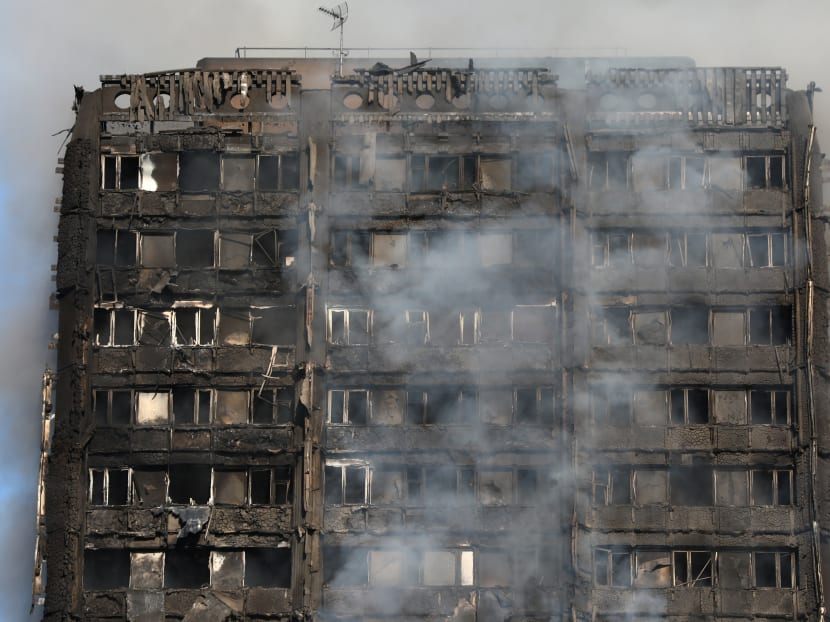Cladding may have helped fan London inferno
LONDON — The inferno that engulfed Grenfell Tower on Wednesday, killing at least 17 people, spread quickly because the building might not have had fire insulation, which experts said should be used when high-rise blocks undergo cladding.
LONDON — The inferno that engulfed Grenfell Tower on Wednesday, killing at least 17 people, spread quickly because the building might not have had fire insulation, which experts said should be used when high-rise blocks undergo cladding.
A planning document detailing the recent refurbishment of the building, which Reuters reviewed, did not refer to a type of fire barrier that should be used during cladding. The 24-storey Grenfell Tower underwent a £10 million pound (S$17.5 million) renovation that was completed last year.
It involved the application of cladding — typically made from materials such as wood, plastic and masonry — to the outside of buildings, with the aim of improving heat and noise insulation.
Cladding is common, but is recognised as a potential fire risk. That is because the area between the cladding and the existing wall becomes a potential “chimney” for flames to rise up along the sides of the building, said safety experts. “The cladding was clearly spreading the fire,” said Mr Mike Penning, a Conservative Member of Parliament who was previously a firefighter as well as fire minister.
Apart from a few of its lower floors, Grenfell Tower was engulfed in flames, trapping families in the upper storeys.
The fire brigade said the blaze was unprecedented in its scale and speed.
Mr Matthew Needham-Laing, an architect and engineering lawyer who specialises in building defects, said the dark smoke that engulfed the building was a telltale sign of burning cladding material.
“It looks to me like a cladding fire,” he said. The material in the cladding, he added, is “flame retardant, so it doesn’t catch fire as easily, but the temperatures you’re talking about are often 900°C, 1,000°C, and in those conditions, any material will generally burn.”
The Royal Borough of Kensington and Chelsea, the local authority which owns the building, declined to confirm whether fire barriers were installed on most floors of Grenfell Tower as part of the cladding process.
Rydon Group, the construction company that undertook the work, also declined to say whether they had been used, but said the revamp “met all required building control, fire regulation and health and safety standards”.
The government department in charge of regulating building work — the Department for Communities and Local Government — did not respond to questions, including whether such fire barriers are required by law.
It later issued a statement saying “it would not be appropriate to comment on the cause of the fire”.
A 2012 planning document published by the Royal Borough of Kensington and Chelsea, which includes detailed diagrams of the cladding as well as the materials to be used, does not include reference to such barriers, according to a Reuters review.
It is not clear if the document represents the final design used in the refurbishment of Grenfell Tower, or whether fire barriers recommended by industry bodies were installed.
Residents of Grenfell Tower had long warned that the building was a “catastrophe” waiting to happen, but their complaints “fell on deaf ears”, they said.
Mr Reg Kerr-Bell, the former chairman of the Kensington and Chelsea Tenant Management Organisation — the body that manages the building — said he stood down several years ago over safety concerns. Just two days before the blaze, he had spoken to a former colleague about their fears. He said: “This is a scandal. This is one of the biggest scandals in the country — and it could have been avoided.” AGENCIES







